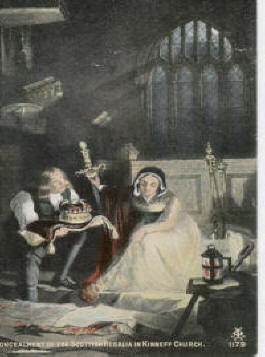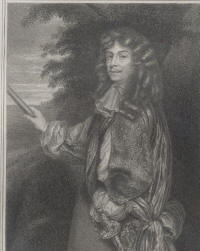
The faith of those who have resided in and about the castle has reflected the country's changes in faith. The original inhabitants of the area would have followed the sun or nature or Druids.

Little is known of the saint after whom
the village is named. However, when St Monan came
(or his bones were brought for veneration) the
folk thereabout would have been converted to the new Celtic Christian Church

which would remain the dominant and
growing faith until,
under the
influence of Queen, and later Saint, Margaret, the country adopted the Roman Catholic faith.
By the time Alan Durward was a part of Alexander II's

court his family would have undoubtedly been a faithful follower of the new faith. Lords and ladies of his class and power were prominently associated with the building and support of chapels, churches and monasteries. Deer Abbey in Aberdeenshire and Lindores in Fife were beneficiaries of both Durward and his wife Margaret's largesse. The original chapel to St Monan was of his construct in the mid-1200's. In later years a Black Friars abbey was established beside the church but that was long after the Durwards were gone.
The
affiliation with the Roman Catholic Church would have continued
throughout the
period of unknown owners and that of Agnes Moncreiff and Sir Thomas Scott.
Thomas Scott was the subject of a tale related by John Knox

John Knox
concerning his appearance in the
dreams of King James V the night Scott died.
According to Knox in his "History of the Reformation" [ed. 1644, p.25], Scot
visited the
king at Linlithgow on the night of his own death 'with a company of devils,'
announcing that he [Scott] was 'adjudged to endless torment',
in warning to the King
that he too would end there
for being a follower of the Roman Catholic faith,
rather than accepting the call of Knox and the Reformers.
The Sandilands were early converts to the teaching of Knox and were
influential go-betweens for Mary, Queen of Scots,
who visited St Monance Castle
on three occasions during her short reign.
Christian Fletcher was the second wife of James Sandilands, 2nd Lord
Abercrombie,
the last of his family to reside at St Monance Castle.

Christina Fletcher
hiding the Royal Regalia.
In
1652 Christian was responsible for thwarting the English
by smuggling the royal regalia out of
Dunnottar
Castle as they besieged it.
while it was under siege by General Lambert and then burying it with her
first husband,
the Reverend James Grainger, beneath the altar of the Kinneff Church.

David Leslie, First Lord Newark
David Leslie was
initially a strong
defender of the Covenant,
and although he subsequently went to the aid of King
Charles II
after the regicide of his father, the Scot Charles I,
his faith remained staunchly Presbyterian
despite the misguided efforts of the clergy which led to the Dunbar defeat
and
throughout his nine year imprisonment in The Tower in London.
General Sir David
Leslie, the first Lord Newark, was buried under the
Kirk in St Monans. During renovations to the church in the late 19th century,
his bones were turfed into the
sea. This, despite his remains having been
identified by the purple silk,
lace and scull cap in which he had been buried.
The Church of Scotland maintained its
firm association with the Castle
for 400 years until the Crewe-Nelson family became owners.
In the Spring of 2007 Nola was awarded her Masters of Divinity
from
Wycliffe College, a low Anglican
Seminary at the University
of Toronto
and is currently a Priest in the Diocese of Toronto.